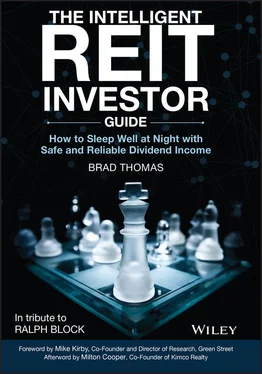Accordingly, utility stocks like those of Duke Energy and Southern Company may compete with REITs for investment dollars to some extent, especially because they've proved to be less volatile than REIT shares in recent years. As such, they can be good choices for people with very modest capital appreciation expectations and total return requirements.
MLPs, for their part, aren't limited so much by industry in a legal sense. Yet the vast majority of publicly traded ones are engaged in energy infrastructure such as gas pipelines and storage facilities, varying in how much exposure they have to natural resource prices.
According to MLP and energy analyst Alerian, the total market capitalization of the energy MLPs has grown rapidly to around $225 billion ($350 billion including Canada) as of September 30, 2020. The sector was almost $800 million in 2014, but MLPs have been consolidating since 2018.
Their dividend yields in November 2020 were close to 8%, which is generally higher than those of REITs. So they can provide investors with significant current income and diversification capabilities. And thanks to depreciation and other tax advantages applicable to the oil and gas industry, much of those cash distributions are not currently taxable as ordinary income.
MLPs are like other pass‐through stock classes such as REITs, business development corporations (BDCs), and YieldCos because they're largely dependent on external capital markets and their unit counts generally rise over time.
They may trade like stocks, but they actually fall into a completely different category. Their legal structure means that investors receive a partnership K‐1 form at the end of each year, which can make tax‐return preparation challenging, to say the least. Also, if held in an individual retirement account (IRA) or other tax‐deferred account, they can potentially give rise to “unrelated business taxable income.” This would then open up their dividends to other forms of taxation under certain circumstances.
Rather like REITs, MLPs distribute most or all free cash flow to their partners. This means they'll need to raise outside capital from time to time if they want to grow, and such capital isn't always available.
All told, MLPs do compete with REITs for investment capital. However, they're different enough from each other that investors don't have to choose one over the other if they have enough capital to spread between the two categories.
Other Real Estate Investment Vehicles
As an asset class, real estate is usually a very good and stable investment as long as it isn't financed with large amounts of debt. A well‐situated, well‐maintained investment property should grow in value over the years, as should its rental revenue. While buildings may depreciate over time and neighborhoods may change, only a finite amount of land exists on which apartment communities, retail centers, and office buildings can be built. So if you own such a property in the right area, it can be – if not a gold mine – a continuing cash cow. New competitive buildings don't just pop up for no good reason, after all. They're only built if rents or property values are high enough to justify the cost of development.
In either such event, owners of existing properties will likely be better off.
This does once again bring up the issue of inflation. But the extent to which it affects commercial real estate owners isn't all that clear. There have been studies done on this issue, including that of David J. Hartzell, former professor of real estate at the University of North Carolina. He and R. Brian Webb concluded that property “returns tend to exhibit stronger relationships with inflation and its components” during periods of low vacancy rates. Therefore, inflation might not be a benefit to landlords when property markets are weak.
As we've mentioned before and will continue to explore, real estate has historically behaved differently from other assets. It therefore adds another dimension of diversity to stock, bond, cash, and even gold and art investments.
REITs are hardly the only way to take advantage of these factors though. Plenty of people choose direct ownership, for example, by being in the real estate business. In which case, they (hopefully) asked themselves questions like: Do I have the time to manage property? Do I know the best time to buy or sell? Do I have or can I obtain the insider information necessary to make it worth my while? Can I attract and retain the best tenants?
Depending on the market climate, buying real estate on the cheap to sell “on the expensive” is often more profitable than holding and managing it. That's why flipping houses holds such an appeal.
Then again, there's a reason why people can lose just as much as they can make on such ventures. Judging the markets appropriately, not to mention the costs and efforts involved, requires access to constantly evolving data. As for buying and holding to rent out to others, this necessitates effective and efficient property management. These cautions can't be overstated, especially since individuals often lack the time, money, and/or expertise to handle those tasks on their own.
It might seem intensely more profitable to keep all the profits from real estate instead of sharing it with fellow investors. But it's also riskier. Investment value is very often determined by the local economy. Therefore, at any given time, commercial properties may be doing well in one place and poorly in another. And most individuals simply don't have the financial resources to buy up a portfolio big enough to be safely diversified, either by property type or geography.
There's the problem of liquidity as well. Selling a single piece of real property can be very time‐consuming and even costly. It's not a simple matter of determining to sell and pressing a button. Far from it. And maintenance and security make for even more headaches. Most people don't want to be the one taking calls about break‐ins, clogged pipes, and stuck elevators. Yet using an outside management company can significantly reduce their profits.
Some investors claim they don't need to own either rental properties or REITs since they own their own homes. However, the dynamics of home values are often very different from those of commercial real estate – something we'll discuss again, albeit briefly, in Chapter 4. For starters, the same diversification and liquidity issues just described factor into owning just one home, as does emotional attachment. It's true that equity can be pulled out of one's home by refinancing, but that usually requires a tradeoff of substantially higher monthly mortgage payments.
So, simply stated, home ownership is no substitute for owning commercial real estate. That's why, for most individual investors, gaining access to real estate through professional rather than personal means is a far wiser course of action.
To solve those problems, some more entrepreneurial types trend toward private partnerships with 2, 10, or 20 partners: however many they see fit. They then delegate the tasks of property leasing and management, either to a general partner or an outside company. That comes at a price, of course. Plus, most private partnerships own only one or a few properties, once again rendering them something less than diversified.
Liquidity, meanwhile, may depend on the financial strength or solvency of the other investors involved. Although it's theoretically possible for one partner to sell his or her interest to another, that option comes with numerous potential problems. Conflicts of interest often abound between the general and limited partners with regard to such things as compensation, selling, and refinancing. And there's always the question of personal liability if the partnership experiences financial difficulties.
Читать дальше












